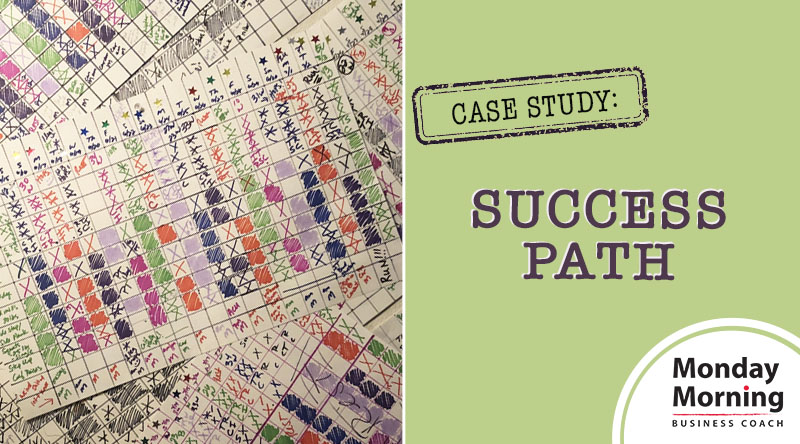In last week’s post, we shared the framework we use to help individuals set themselves up for success with their goals throughout the year. We call it Mapping Your Success Path.
As a reminder, you start the process by thinking big about the whole of your life before diving into the specific goals.
Here are the steps:
- Life Priorities – what truly matters to you in this life?
- Meaning & Purpose – what are you passionate about that brings you meaning and purpose?
- Goals – what’s your vision of success and what are the 1-3 goals that will move you forward?
- Obstacles – what gets in your way?
- Small Steps – what are the small steps you can take each day to get around the obstacles so that you can gain traction on your goals?
While people love the idea of this framework, they often ask if it really works. So, this week Heather is going to share her recent experience using this framework in 2019 after she had ACL reconstruction on her knee:
. . . . . . . . . . . . . . .
I think it’s important to tell you that I’m a mover . . . I hurry, run, and dash through my life, and that pattern has taken its toll on my knees in more recent years. Most of the time there’s no need for me to be hurried, but I guess I believe—in the moment—that it’s efficient. I suspect you’ll see the irony in this.
A year ago, I hopped up onto a wobbly stool to hang a photo instead of grabbing the step stool in the garage (an example of trying to be efficient!). The fall from the wobbly stool resulted in the complete tear of my ACL. I not only required surgery but 9-12 months of physical therapy to recover.
I decided that it was time for me to change my behavior. Knowing this would require me to learn new habits, I decided to use our Mapping Your Success Path framework to bolster my chances of success.
Here’s what the framework looked like for my situation:
Meaning and Purpose: I loosely describe my sense of meaning and purpose as someone who is an activator for myself and others—I am pretty passionate about helping people move forward. In this case, I committed to bringing that passion to my own life.
Vision/Goals: I often pick one word that’s my theme for the year and, as I considered what it would take for me to change my behavior, I decided that for 2019 it was Mindfulness. I wanted to heal properly which meant moving slower, more deliberately, and doing daily (often small) exercises. I needed to listen to not only the health care pros but to my own body…All. The. Time.
Obstacles: I knew that the biggest obstacle would be ME. My constant sense of “gotta go, gotta go, gotta go!” This obstacle wasn’t as difficult to overcome when I was on crutches because it wasn’t an option to move quickly. Once I started to heal and become more mobile, I knew the real test would begin.
Small steps: The best way for me to remain mindful and not slide back into my old habits, was to pause every time I stood up and remind myself that my goal was to be mindful of my body.
To help me remember this, I regularly talked about it, left myself notes around work and the house, and I setup a support system to further ensure that I was successful.
- Accountability: As I mentioned above, I regularly told my friends, family, and coworkers about it so that they could help to hold me accountable. I can’t tell you how often one of them reminded me to slow down, saying something like, “Heather! What’s the rush? Take it easy!”
- Progress Tracking: I knew that the only way I could easily track the 15-20 exercises I had to do daily, was to create something tangible that I could see. So, I made large poster board-sized charts and checked off each time I did an exercise that was on the list. I gave myself a star each day that I did exactly what I was supposed to do. Turns out that our adult brains really do like to see that we’re making progress!
- Reminders: Once I started back at work, I knew it would be very difficult to stay mindful, so I put another piece into place. I created 3 different reminders on my phone that went off at different times of the day. They reminded me to get up, move, stretch, take a walk, etc. I still use them!
I’m happy to say that I completed the year
without any falls or accidents
and have learned to pause more often
and to listen to what my body is telling me.
. . . . . . . . . . . . . . .
How different would your world be if, by the end of the year, you’d been able to move forward toward your vision of success?
We’ve included our infographic again so that you can print it out and use it to help you think about where you land on your success path, and then the next steps to take toward success.
into action in your life, contact Heather
about our coaching services.

